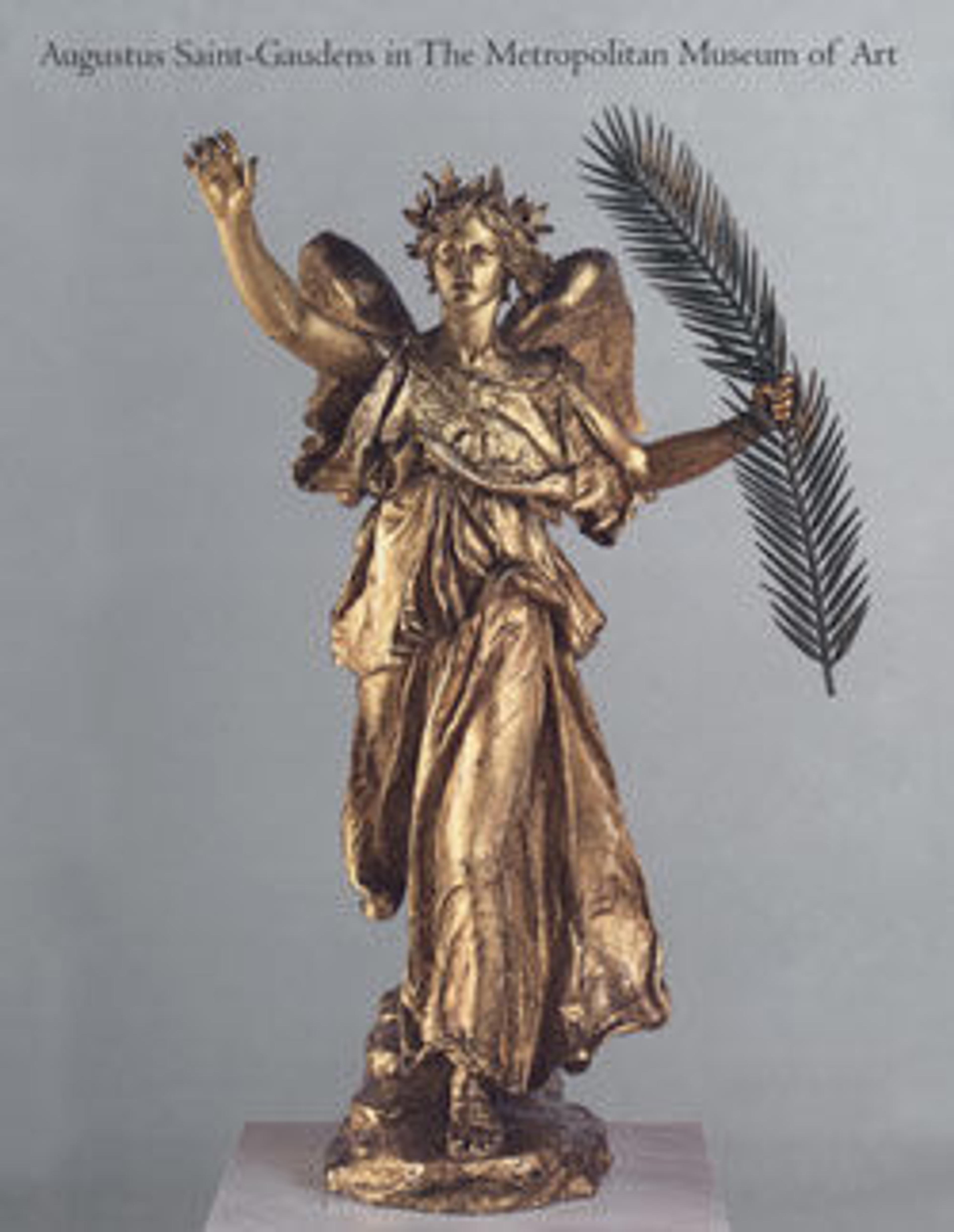The Puritan
This statuette is a reduction after Saint-Gaudens’s monument to Deacon Samuel Chapin (1598-1675), which was unveiled in Springfield, Massachusetts, in 1887. As there was no record of Chapin’s appearance, Saint-Gaudens modeled an idealized settler who conveys the fortitude and upright morals associated with the White, Protestant founders of the Massachusetts Bay Colony. Eyes focused downward, the stern figure strides with a walking stick though the New England wilderness, symbolized by pine branches scattered on the base. About 1894, Saint-Gaudens resolved to make reductions after the full-size "Puritan," because of the statue's popularity and for the income he would derive. By mid-1898 bronze reductions were being cast in Paris. Located reductions, which number more than forty, reveal minor alterations to the figure. Examples vary in the angles of the hat and the walking stick and particularly in the coloration, which ranges from gold to brown to the green of the Metropolitan's cast.
Artwork Details
- Title:The Puritan
- Artist:Augustus Saint-Gaudens (American, Dublin 1848–1907 Cornish, New Hampshire)
- Date:1883–86, cast 1899 or after
- Culture:American
- Medium:Bronze
- Dimensions:30 1/2 x 18 1/2 x 13 in. (77.5 x 47 x 33 cm)
- Credit Line:Bequest of Jacob Ruppert, 1939
- Object Number:39.65.53
- Curatorial Department: The American Wing
More Artwork
Research Resources
The Met provides unparalleled resources for research and welcomes an international community of students and scholars. The Met's Open Access API is where creators and researchers can connect to the The Met collection. Open Access data and public domain images are available for unrestricted commercial and noncommercial use without permission or fee.
To request images under copyright and other restrictions, please use this Image Request form.
Feedback
We continue to research and examine historical and cultural context for objects in The Met collection. If you have comments or questions about this object record, please contact us using the form below. The Museum looks forward to receiving your comments.
